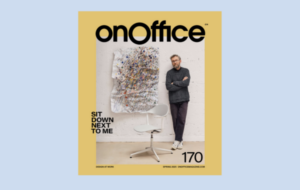 ‘El vapor nace en el silencio’ (Vapour is born in silence) by Clara Durán, winner of the 2015 Graduate Art Prize||
‘El vapor nace en el silencio’ (Vapour is born in silence) by Clara Durán, winner of the 2015 Graduate Art Prize||
Art defines nations. Globally, it’s a multi-billion-pound industry. We learn about art from a young age, fill our homes with it and are surrounded by it when we are hospitalised or, in our dotage, in nursing homes. In hotels, museums and restaurants – even some caves – walls are adorned with art. We paint the walls of our cities with art – but we so regularly forget about it in our places of work.
Currently there is a trend towards defining the items that make up “wellbeing” in the office. Workplace analytics firm HATCH has shown that, for the conscientious employer, tangible items, such as the desks we sit at, the chairs we sit on, the coffee we drink and the toilets we frequent are important considerations when improving employee satisfaction. This is rarely the case with artwork. Across numerous existing studies, art is among the lowest-rated items in the office. Consultant Leesman reports that 80% of office-workers identify their attitude towards existing art collections as somewhere between apathetic and hateful. Office design expert Jenny Thomas’s research further bolsters the finding that artwork is regularly rated below the minimum satisfaction rating. In total, that’s a sample size of approaching 100,000 office workers who – globally – report that artwork in their office is just not that great.
Why should we care? It’s just background decoration, right? Wrong.
First, we surely have a societal obligation to support and encourage art and culture so we don’t power towards a future void of any creativity. Second, there are also benefits to workplace art. Ever since the publication of Eric Sundstrom’s seminal research in 1986 that linked the workplace to its impact on people, there’s been a growing wealth of data on individual elements: lighting, coffee, furniture, planting, break-out space, air-quality, ambient temperature, control, spatial design and layout – everything has been meticulously poured over. Artwork even got a look in. Leesman reports that 50% of respondents believe artwork to be part of an effective workplace; HATCH Analytics reports that 46% of people believe art would improve their workplace experience; a BCO study in 2014 revealed that 61% of respondents reported artwork increased their creativity and a US survey showed 82% thought artwork was “important” in the workplace.
Research that ARTIQ has been involved in, which is soon to be published, shows a direct correlation between art and productivity; the inclusion of an art collection in a workplace led to a 14.3% increase in perceived productivity when compared to a control group. Cross-referencing the cost of employing a knowledge worker and the cost of renting an art collection for 6 months, we found the average client only needed a 0.09% increase in productivity to pay for the collection. It’s a no-brainer.
As we develop as a society, there are things we can too easily forget. The importance of culture and art is one of them. And when it comes to business, workplace art looks like a winning formula too.
Patrick McCrae is managing director of ARTIQ
Even though many people believe artwork would improve their office environment, it’s an area that most employers continue to ignore, says Patrick McCrae of art consultancy ARTIQ























